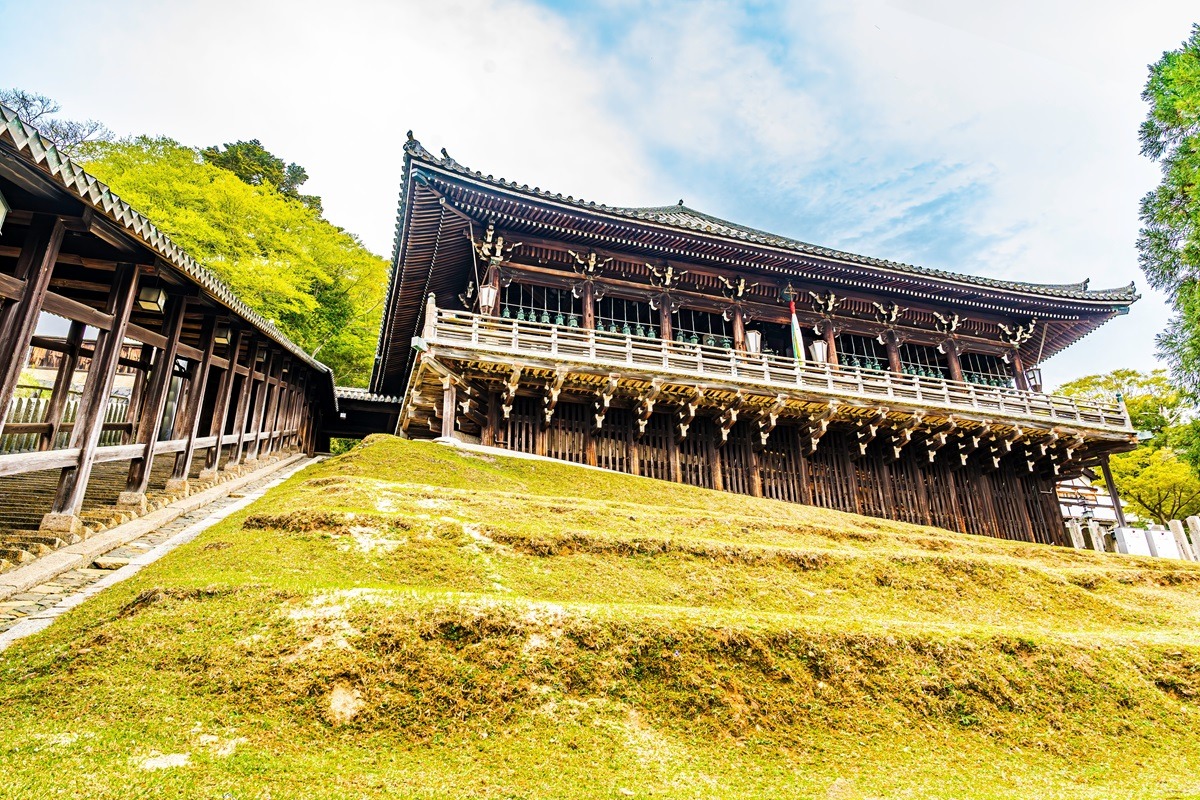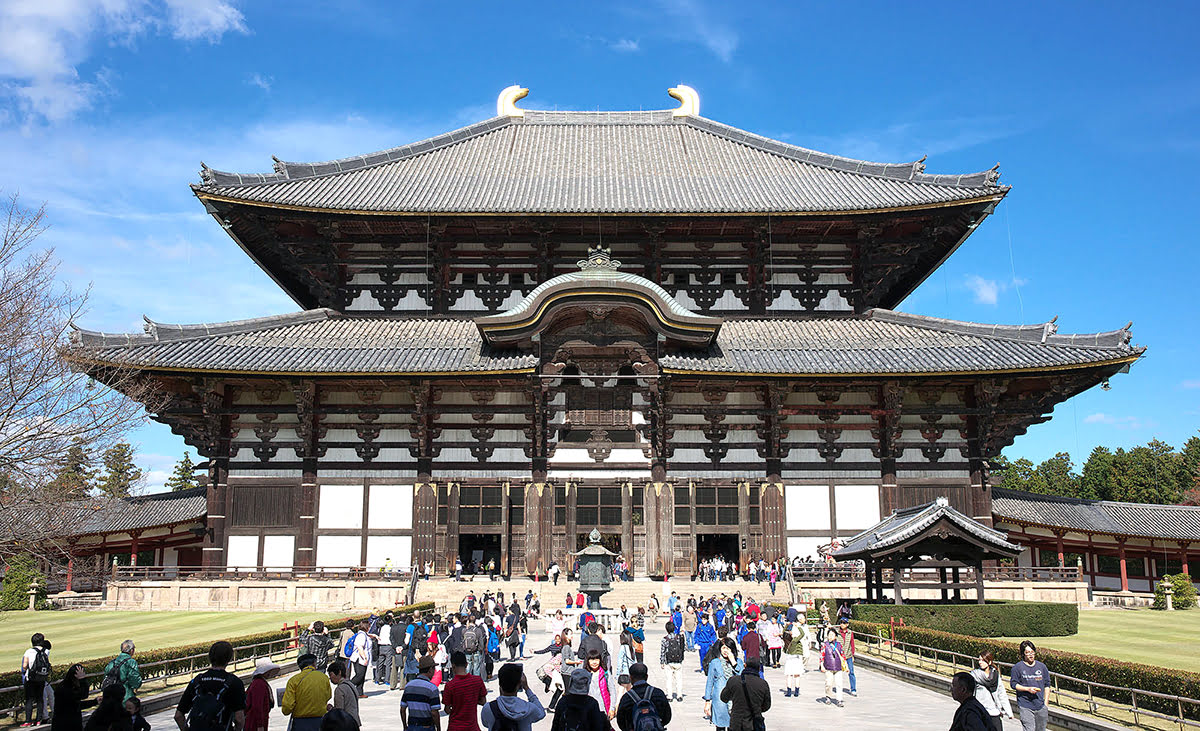Todaiji Temple, or the “Great Eastern Temple,” is a symbol of Nara’s rich cultural heritage and a significant monument in Japanese history. Nestled in the northern section of Nara Park, it is renowned not only for its sheer size but also for its historical and spiritual significance. As one of the largest wooden structures in the world, Todaiji Temple houses the immense Vairocana Buddha, making it a must-visit for anyone traveling to Nara.
The Historical Significance of Todaiji Temple
Founded in 752 by Emperor Shomu, Todaiji Temple was not only a center of Buddhist worship but also a protector of the state. The construction of the temple and its Great Buddha (Daibutsu) was an immense undertaking, aimed at unifying Japan under Buddhism during turbulent times. Emperor Shomu’s vision was realized when the colossal Buddha statue, cast in bronze, was consecrated in a grand ceremony attended by dignitaries from across Asia.
Todaiji’s Architectural Marvels
The most striking feature of Todaiji Temple is the Daibutsuden, or the Great Buddha Hall. This massive wooden structure, rebuilt in 1709 after a fire, is still only two-thirds of its original size. Inside, you’ll find the Great Buddha statue, which stands at a towering height of 15 meters. Crafted with thousands of bronze pieces and coated in gold, it is a testament to the architectural ingenuity and spiritual devotion of ancient Japan.
Exploring the Temple Grounds
Todaiji Temple’s sprawling grounds offer much more than just the Great Buddha Hall. The complex includes several other significant buildings and temples that enrich the visitor experience.
Nandaimon Gate
As you approach Todaiji, you’ll first pass through the mighty Nandaimon Gate, a striking structure guarded by two fierce Nio statues. These statues, carved during the Kamakura period, are considered masterpieces of Japanese sculpture.
Nigatsudo Hall
Located to the east of the main hall, Nigatsudo Hall offers spectacular panoramic views of Nara city. It is famous for the Omizutori ceremony held annually in March, where large torches are lit and carried around the balcony of the hall. The ceremony, believed to cleanse spectators of sins and ensure good health, is a captivating spectacle for visitors.
Day-by-Day Itinerary for Visiting Todaiji Temple
Day 1: Arrival and Overview
Begin your journey in Nara by arriving at the Nara Station. Take a city bus to Todaiji Temple and start your exploration with the Nandaimon Gate. Spend ample time marveling at the Great Buddha Hall and its surrounding structures. End your day with a peaceful stroll through Nara Park, where you can interact with the friendly deer that freely roam the park.
Day 2: In-Depth Exploration
On the second day, revisit Todai-ji to explore other significant buildings like the Nigatsudo and Hokke-do Halls. Engage in a deeper understanding of the temple’s historical context by visiting the nearby Todaiji Museum, which houses various artifacts related to Japanese Buddhism and the temple’s history.
Practical Information for Travelers
To make the most of your visit to Todaiji Temple, it’s essential to plan accordingly. Here are some practical tips:
- Opening Hours: The temple is open from 7:30 AM to 5:00 PM, with extended hours during peak tourist seasons.
- Entrance Fee: The admission fee is 800 yen for adults and 500 yen for children.
- Getting There: Todaiji Temple can be easily reached by a short bus ride from Nara Station or a 30-minute walk through Nara Park.
- Best Time to Visit Spring and autumn are the best seasons to visit, offering pleasant weather and beautiful scenery.
Overall, Todaiji Temple is more than just a historic site; it is a living testament to Japan’s spiritual and cultural legacy. Whether you are a history enthusiast, a spiritual seeker, or simply a traveler looking to experience Japan’s beauty, Todaiji Temple in Nara is an unmissable destination that will leave you with unforgettable memories.





















